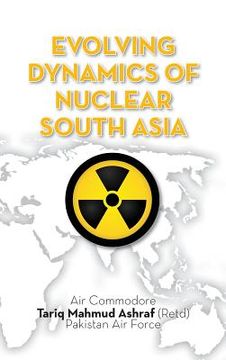Share
Evolving Dynamics of Nuclear South Asia (in English)
Tariq Mahmud Ashraf
(Author)
·
K W Publishers Pvt Ltd
· Hardcover
Evolving Dynamics of Nuclear South Asia (in English) - Ashraf, Tariq Mahmud
$ 62.74
$ 74.50
You save: $ 11.76
Choose the list to add your product or create one New List
✓ Product added successfully to the Wishlist.
Go to My WishlistsIt will be shipped from our warehouse between
Thursday, July 04 and
Friday, July 05.
You will receive it anywhere in United States between 1 and 3 business days after shipment.
Synopsis "Evolving Dynamics of Nuclear South Asia (in English)"
India and Pakistan have both never really accepted each other's existence. Their ties have been characterised by a lingering hostility and a pronounced qualitative and quantitative military imbalance in favour of India. Additionally, India took the lead in developing nuclear weapons while Pakistan only seriously embarked on this endeavour after India had already conducted its "peaceful nuclear explosion" in 1974. Having lost half of their country in 1971, and realising that they could never really hope to match India in conventional military might, Pakistan embarked on nuclear weapons development in the early 1970s more as a necessity rather than as a need. Despite adopting the more difficult route of uranium enrichment, Pakistan proved virtually unstoppable. While China provided some assistance to Pakistan, the United States maintained a marked ambivalence towards her quest for nuclear weapons - it sometimes applied sanctions against Pakistan while at other times, it opted to ignore what was happening by turning a blind eye. The weaponisation of their nuclear capability in 1998 led India and Pakistan to venture into the realm of doctrinal rethinking. Commencing with a revision of the conventional military doctrines, this led to India publishing its draft nuclear doctrine whereas Pakistan preferred ambiguity. The essential consideration herein was on how the conventional military thinking of both the countries has been influenced by the availability of nuclear weapons in their respective inventories. Along with this process of doctrinal evolution, both countries were required to establish viable and internationally acceptable nuclear weapon control systems. The doctrinal evolution was responsible for inducing several systemic changes in their armed forces, and their entire military system had to undergo significant changes. Simultaneously, these led to a fresh assessment of the comparative nuclear military potential of the two countries and how this could possibly be employed in a future conflict.
- 0% (0)
- 0% (0)
- 0% (0)
- 0% (0)
- 0% (0)
All books in our catalog are Original.
The book is written in English.
The binding of this edition is Hardcover.
✓ Producto agregado correctamente al carro, Ir a Pagar.

